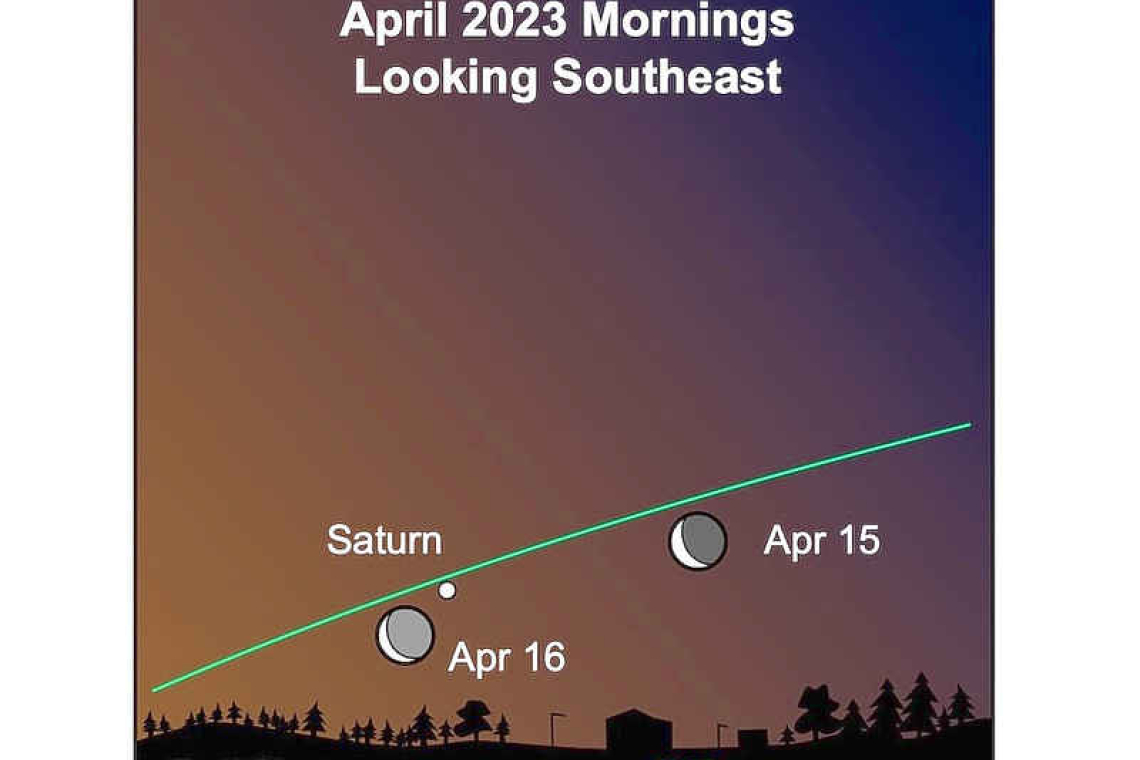~ St. Maarten’s Backyard Astronomy for April 14-16 ~
Sun rises at 5:55am
Sun sets at 6:28pm
Lunar phase: 4th Quarter, Waning Crescent
Moon rises at 2:45am
Moon sets at 2:18pm
This week is the celebration of dark skies; it’s an international event where many communities dim their lights and encourage people to stargaze. Luckily, we have the ocean around us and any remote beach or hillside will provide a dark sky and thus very bright stars.
This weekend, we can keep our eyes on the southern constellations, admire a few planets on parade, and get ready for next weekend’s Lyrid Meteor Shower.
Look to the southern horizon after sunset, you can likely locate the famous Southern Cross, also known as Crux. This is a small constellation, but one that has been used for navigation throughout the centuries and is famed in stories and songs, including our own St. Maarten Song! Not only that, but many countries of the Southern Hemisphere have placed this little star pattern on their national flags, including Australia, New Zealand, Brazil and New Guinea.
Crux will begin to rise above the horizon at 8:00pm and as it rises, it will curve across the sky from south-southeast to south-southwest in a low arc. The peak of this low arc will occur Saturday about 11:00pm. By about 2:00am Sunday, you will notice the Southern Cross beginning to drop below the horizon. If we were farther south, say at the latitude of Curaçao, we would have a longer and slightly higher arc. Those much farther south, say in Brazil, would see Crux high up in the sky for the entire night, and rather than forming an arc across the sky, its path would be seen as a circle.
Let’s see what planets will be up for us to admire during those prime Crux-viewing hours. Any time after sunset is a great time to find Venus the Evening Star. The planet Venus shines brightly in the West; and you honestly can’t miss it once the sun goes down. As Venus sets, Crux rises and about halfway between them is the brightest true star in the sky – that is Sirius in the constellation Canis Major (Big Dog). Another planet that parades through our starry sky this weekend is Mars. You’ll find the Red Planet up in Gemini, located between the twins. Jupiter is currently not visible during the dark hours and Saturn is only up just before dawn.
By the end of next week and through the weekend, that is April 21 until April 23, we will be hoping for clear skies to enjoy the peak of the Lyrids meteor shower. The full length of the meteor show is April 15 to April 29, so you may see shooting stars as early as this weekend! The good news is that there will be no moon in the sky during the peak hours for the Lyrids this year, so better viewing of the meteor shower. More about that in the next WEEKender!
Thank you for keeping up with the Night Sky articles, backyard astronomy designed for St. Maarten sky viewing. FYI: If you are out later on in the week, note that each star rises about four minutes earlier each day than written here, and the moon rises 50 minutes later. Night Sky is researched and compiled by Lisa Davis-Burnett. Earthsky.org is a key resource for information and images. Questions or comments? Email This email address is being protected from spambots. You need JavaScript enabled to view it.







